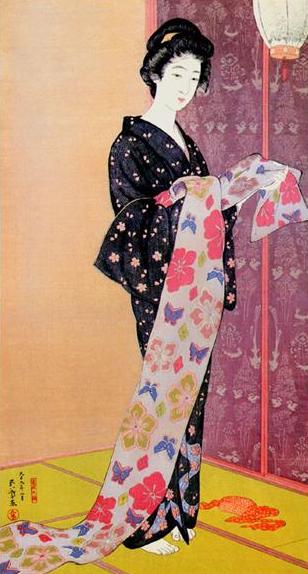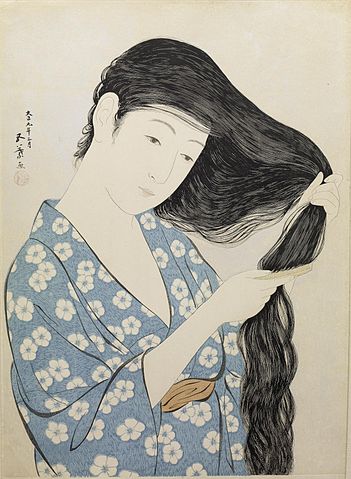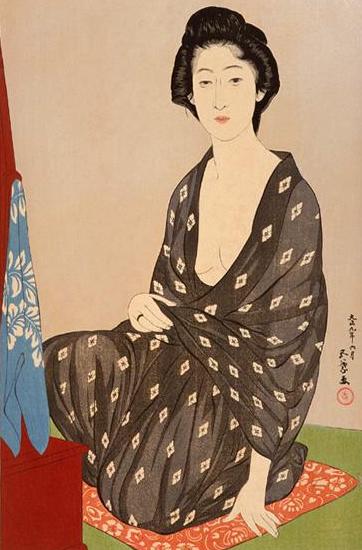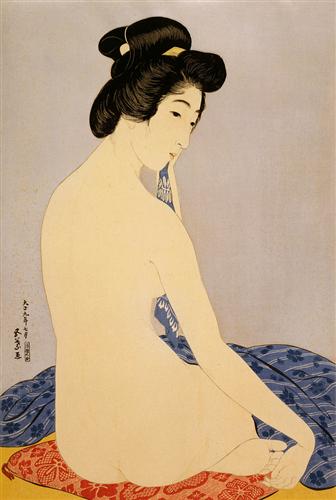Japan art and Goyō Hashiguchi: Females in Taisho era
Lee Jay Walker
Modern Tokyo Times

Goyō Hashiguchi (1880-1921) is a noted Japanese artist who breathed art until death took him away from this world. Hence, even in the last moments of his life, he continued to be inspired by the beauty of art and remained steadfast while facing the valley of death.
During the Taisho Period (1912-1926), the Shin Hanga art world began that was a revivalist artistic movement – with more limited subject matters – that was steeped in the richness of ukiyo-e. However, Goyō designed only a limited number during the late period of his life before succumbing to meningitis.

The Walters Art Museum says, “Through just a handful of images, Hashiguchi Goyo, the last of Japan’s great ukiyo-e printmakers, captured the spirit and the dynamic visual character of the pre-war era… Goyo oversaw the production of just 13 prints. Of these, eight were images of beautiful women. To this small group of images, his brother and nephew added a handful of posthumous works based on completed designs. The 12 prints and two drawings in this exhibition comprise first editions of all of Goyo’s prints of beautiful women and reveal the elegant design sense of this important modern Japanese artist.”
In modern Japan, the Kimono is used by ladies for various angles of culture and special occasions. Hence, the Kimono is used during traditional wedding ceremonies, tea ceremonies, coming of age, graduation ceremonies, summer festivals, staying at exclusive hotels with traditional themes (architecture, traditional Japanese food, and so on), etc.

Goyō’s art provides a lovely glimpse into the world of Japanese female attire during the Taisho period (Kimono, Yukata, and evening attire). This glimpse of female beauty is tainted by class issues and the ideal body form. However, countless cultures provide an idealistic image of female beauty concerning traditional dress, high fashion, and exclusive pattern designs to various degrees.
Overall, the formality of the art naturally provides an elegant glimpse into the ideal vision of beauty during the Taisho Period. This concerns the eye of the beholder and how ladies cared for their body, fashion, skin, and other more natural angles to life during this period of Japanese history.

The beauty of Goyō’s art matches the natural beauty of the ladies depicted in this art piece through the prism of his stylish art.

MODERN TOKYO TIMES PHOTO IMAGES
PLEASE DONATE TO HELP MODERN TOKYO TIMES
Modern Tokyo News is part of the Modern Tokyo Times group
DONATIONS to SUPPORT MODERN TOKYO TIMES – please pay PayPal and DONATE to sawakoart@gmail.com
http://moderntokyotimes.com Modern Tokyo Times – International News and Japan News
http://sawakoart.com – Sawako Utsumi personal website and Modern Tokyo Times artist
https://moderntokyonews.com Modern Tokyo News – Tokyo News and International News
PLEASE JOIN ON TWITTER
https://twitter.com/MTT_News Modern Tokyo Times
PLEASE JOIN ON FACEBOOK